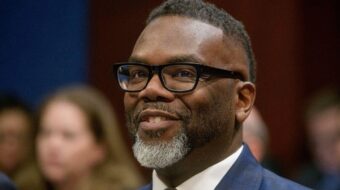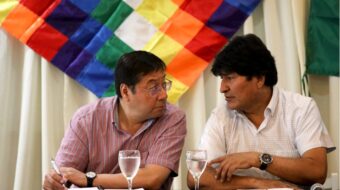
Forty years ago at the Summer Olympics in Mexico City, Tommie Smith and John Carlos raised their black-gloved fists in protest against racism and injustice. Students at San Jose State University, Smith won the gold medal and Carlos won the bronze medal in the 200-meter race. As the American flag rose and the National Anthem played, the two sprinters bowed their heads, closed their eyes and raised their fists.
Smith told the media his raised right fist represented Black Power in America, Carlos’ raised left fist represented Unity in Black America. The black scarf around his neck represented Black pride and their black socks (no shoes) represented Black poverty. Carlos said he wore beads around his neck to represent those Africans who died in the Middle Passage and those who lost their lives through lynching.
Harry Edwards, a young sociologist, asked all Black athletes to boycott the 1968 Olympics to bring attention to the civil rights movement and its struggles. Edwards organized the Olympic Project for Human Rights (OPHR). There was much debate before the games about which kind of protest should take place. Because of the serious consequences of a boycott, the athletes finally decided against it. Students at Black colleges were told they would be expelled if they even joined OPHR. Those in the military were threatened with severe punishment. Members of the track and field team believed that it was important to go to Mexico City and to do their utmost to win and use their victories as a platform to make their statement. Sports historians often call the 1968 Olympic US Track and Field team the greatest team ever. The team won 22 medals, 12 gold and set 8 world records in the process. Tommie Smith had broken 13 world records in his career.
It was decided that each athlete would come up with his own form of protest. Some of the Black athletes went to the medal stand in black socks without their shoes. Some wore black armbands or black ribbons. Some wore black berets similar to those worn by the Black Panthers. Everyone did something to protest racism and injustice, but the action of Tommie Smith and John Carlos, a secret they kept from the team, brought worldwide attention. Afterwards Smith and Carlos were suspended from the US Team and banned from the Olympic Village. There were death threats made on them and their families. American officials told them they had disgraced their country and the media criticized and ridiculed them. But many others supported Smith and Carlos. Peter Norman of Australia, who had won the 200 meter silver medal, wore an OPHR badge on the evening of the protest. Norman, a white man, was ostracized upon his return to Australia and was not chosen for the 1972 team in spite of qualifying.
Both Smith and Carlos continued their participation in sports and both have served as track and field coaches. In 1998 they were honored as heroes on the 30th anniversary of their protest. San Jose State University erected a statue to commemorate their courage in 1968. Both received an Arthur Ash Courage Award. A documentary about the 1968 protest, “Salute,” will be shown at the Sydney Film Festival in 2008. The director of the film is the nephew of Peter Norman.
Said Tommie Smith, “Of course I was afraid. I was terrified, but I was on a mission. I believed I was saved because of my belief in others, not necessarily myself, because I am a vessel to be used for the betterment of Human kind.”









